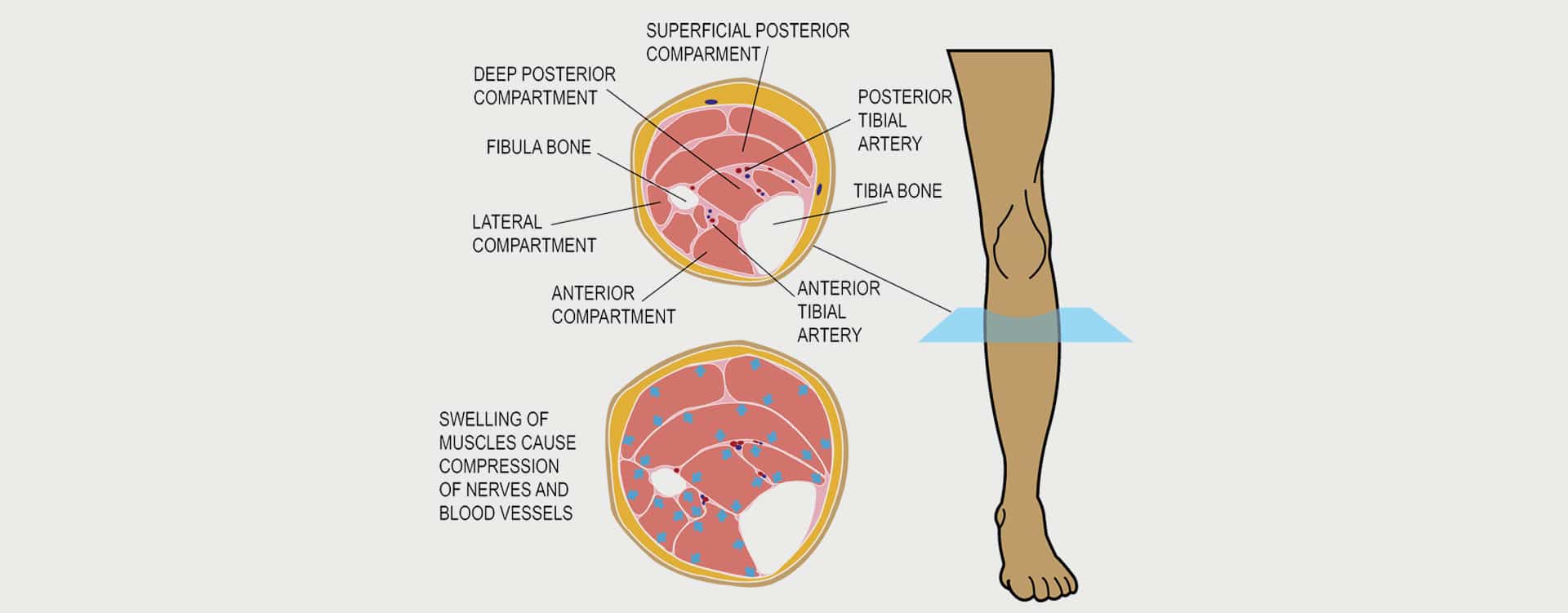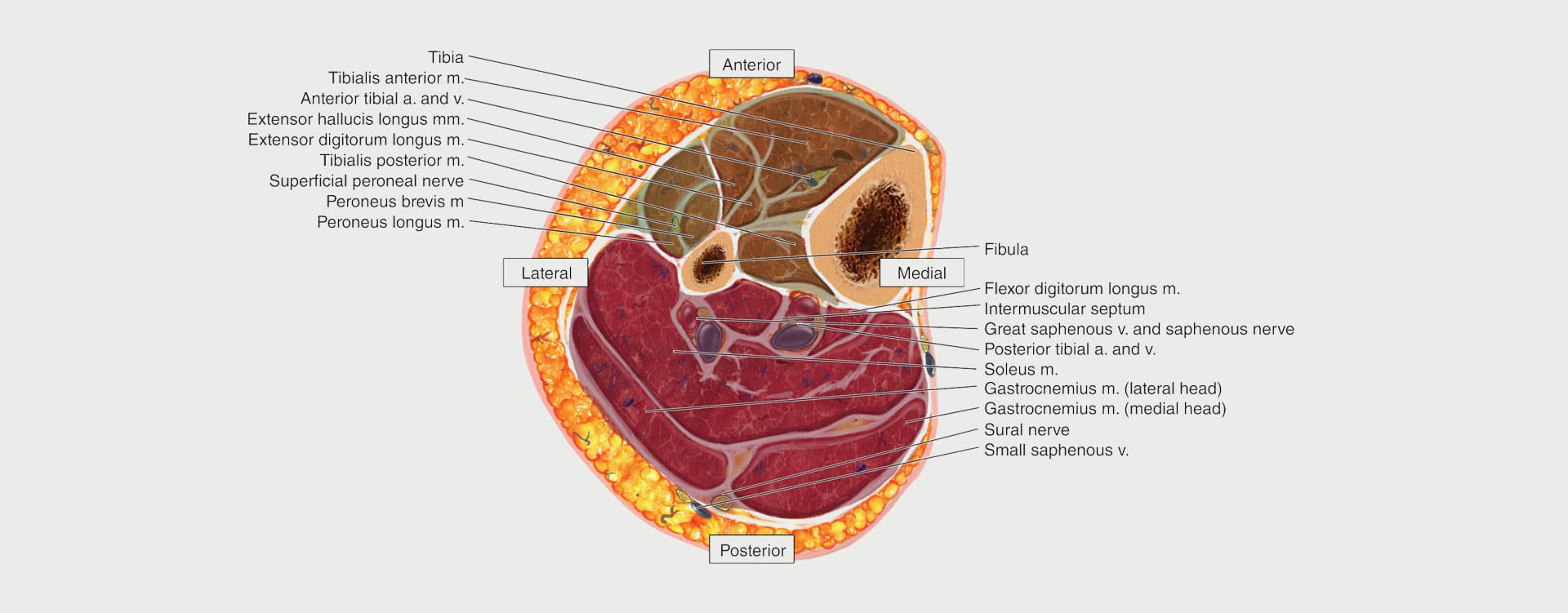COMPARTMENT SYNDROME
LOWER LEG
COMPARTMENT SYNDROME

Compartment syndrome is a painful condition where there’s an increase in pressure and swelling in a confined muscle space. This condition is potentially dangerous, and at best extremely uncomfortable.
In many cases, compartment syndrome is the result of a traumatic injury, like a fracture. This type of compartment syndrome comes on quickly, and is known as acute compartment syndrome. When we treat this condition at MOTUS, it is often on an athlete who is recovering from some type of bone break. In fact, tibia shaft fractures are, overall, the most common cause of compartment syndrome.
In this context, compartments refer to groupings of muscles, blood vessels, and nerves in the legs. These are surrounded by a thin, connective tissue called a fascia, which serves to keep the compartments in place. An injury, such as a tibia shaft fracture, can cause bleeding and swelling within the muscles of the compartment.
But, since the fascia is designed to hold things in place, it is tight and doesn’t make space for this injury response. The compartment becomes pressurized, and blood flow to the nerve cells and the muscles is disrupted. Lymphatic drainage kicks in to help reduce the pressure, but can only do so much. After the lymphatic drainage has done what it can, the remaining pressure could be enough to cause potential nerve dysfunction and deformation if not addressed.

Patients who are experiencing compartment syndrome while recovering from an injury will report lots of pain in the leg, more than should be expected for the injury from which they are recovering. Pain and swelling with a passive stretch is an indicator that compartment syndrome could be present. If we suspect compartment syndrome, we’ll take a measurement of the compartment. If pressure is high enough, you will need immediate fasciectomy surgery.
There is also a chronic type of compartment syndrome that is less serious. In this case, the symptoms develop gradually during exercise and get better when at rest. Patients with chronic compartment syndrome could experience cramping, swelling, tingling, or notice that the area has lost color and is cold to the touch.
For chronic compartment syndrome, we generally recommend a program of range of motion and strengthening exercises that can potentially help take pressure off of the muscles. Some of our modalities, such as Pulsed Electromagnetic Field Therapy, can also be helpful in reducing the symptoms of compartment syndrome.
Your exact treatment will depend on your history and the mechanism behind compartment syndrome. As always, we treat with the big picture in mind and want to fix the problem long term.

3 Ways to Level Up Your Rehab and Injury Prevention With Us





